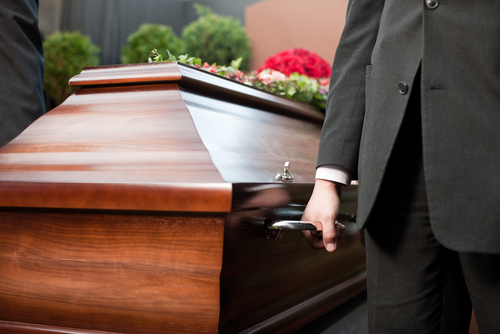
At a recent wake in New Orleans, the deceased was seated at a table with a cigarette in one hand and a beer in the other. Bizarre? Maybe, but it’s part of a trend.
The traditional send-off of the dearly departed is increasingly giving way to an array of personalized touches, say two Longwood University sociologists who studied changes in the funeral industry.
These days the bereaved are being comforted with not only lifelike poses of the deceased at wakes but technology-enhanced services in parks and arenas, eco-friendly burials and weddinglike receptions, say Dr. Virginia Beard and research partner Dr. William Burger. Cremations, which now account for nearly half of funerals, often feature ever more creative ways of disposing of the ashes.
"Some people say, ‘I want to go out with a bang,’" said Beard. "This is the ‘me’ generation, and a lot of people, especially baby boomers, want to honor the deceased with a customized funeral. That’s why we’re seeing things like caskets that look like footballs and [hearing] Bob Dylan instead of ‘Amazing Grace.’"
The bells and whistles sought by some people couldn’t come at a better time for funeral homes. They’re making up for lost revenue—from cremations, caskets purchased from online retailers and pre-planned funerals—by offering more services.
"Funeral directors are being called the new wedding planners," said Burger.
At the other end of the spectrum, an increasing number of people want to cut costs. Cremations—which cost about 90 percent less than traditional services—have been increasing since the early 1980s and account for 47 percent of funerals in the United States. (The average cremation costs about $1,200; the average funeral about $13,000.)
Consumers also are saving money by purchasing a casket from online retailers and having it delivered to the funeral home. As long as the casket meets EPA standards, even if it was built at home, a funeral home has to accept it, said Burger.
"There’s more information online these days, so consumers should be able to make better-informed choices than in the past," said Burger.

Dr. Virginia Beard (L) and Dr. William Burger (R)
Technology is facilitating change in the funeral industry. One recent trend is webcasts and DVDs of funerals, helpful for those with loved ones scattered around the country. Some funeral homes have switched to selling their caskets and pre-planning services online to reduce overheard costs. Custom slideshows, videos and online guest books or memorial pages are commonplace.
It was far different during the early days in this country. "In Puritan New England, there was no embalming and no service. They just washed the body and put it in the ground," said Burger.
The "modern" or traditional funeral—embalming, viewing or visitation at the funeral home, a religious ceremony and burial in a cemetery—hasn’t been around as long as people think, said the sociologists. It became the norm only in the mid-20th century.
The rediscovery of embalming during the Civil War led to the new occupation of undertaker, today’s funeral director, who gradually took over embalming from surgeons. Embalming had been performed in the home of the deceased where the body was kept until burial. Funeral homes—originally called "parlors" because they were designed to look like a living room—didn’t come into vogue until the 1920s.
Despite being married to a funeral director, Beard didn’t know anything about funeral homes, nor did Burger, when she began her research—prompted by seeing a "Mobile Viewing" sign at a Farmville funeral home. Was she shocked by anything she found?
"It’s all shocking at the beginning," she said with a laugh. "Bill and I would come across something and say, ‘Did you know this?’ It was creepy at first, but now this stuff doesn’t even faze us. If I was surprised by anything, it was the number of options out there."
Burger and Beard plan to next study advertising, historical and contemporary, in the funeral industry.
[Funeral image courtesy of Shutterstock]


Leave a Comment